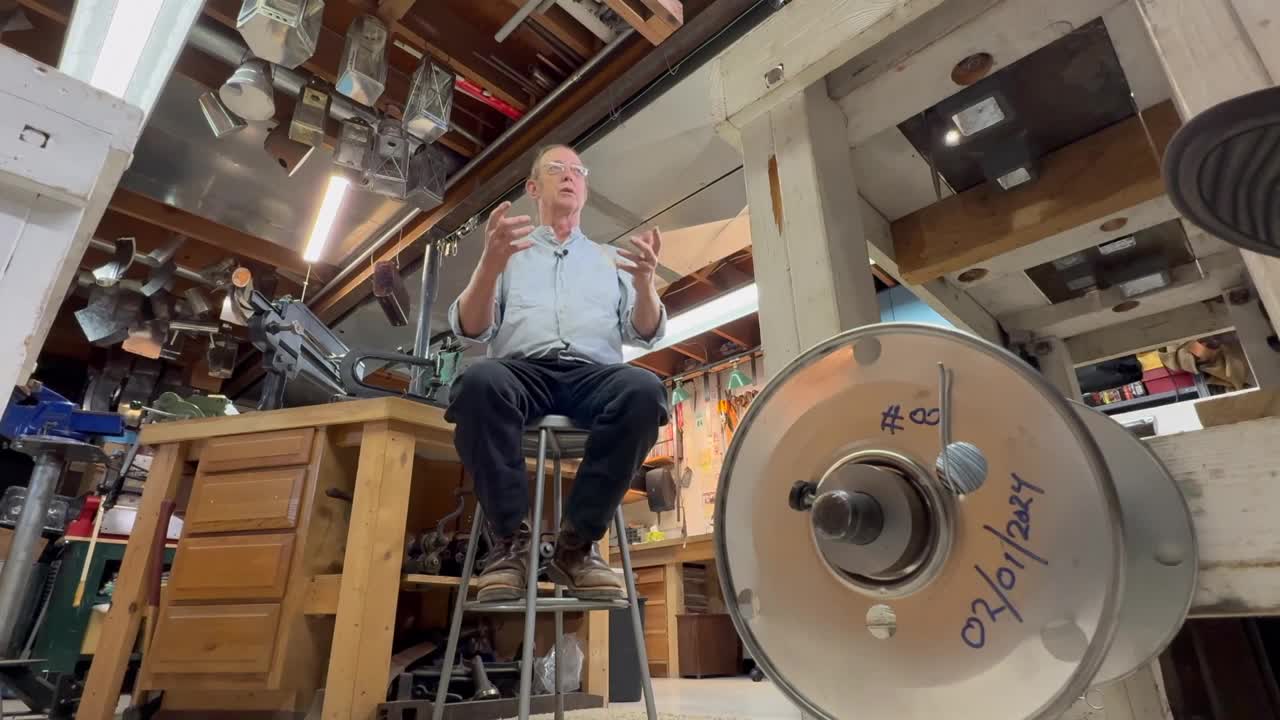BLAIR, Neb. (KMTV) — Everything has a starting point. In the case of this story, that starting point was a tin cup purchased for $10.
- Chris Hagemann was 18 years old when he bought that cup. He carried it around for years, he said, hoping to meet someone who could teach him how it was made.
- Today, Hagemann not only knows how to make cups - but he has 148 items in his catalog. He believes he's one of only about a dozen professional tinsmiths in the country.
- "Today, we have such uniform manufacturing. And the uniformity has just taken the soul of mankind out of it. So, what we are striving for from time to time is to find something that is made by man," he said of the craft.
Continue reading for the broadcast transcript of this story.
As he hung a pattern from the joists overhead -
"My booklet? My Book-O-Brains?!," Chris Hagemann exclaimed.
He ushered 3 News Now's Mary Nelson to the other side of his workshop.
"I wore the cover off of my notebook," he explained as he held a spiral-bound notebook now with a tin cover. It houses a handwritten how-to for 148 items.
A dustpan.
Apple corer.
Different lanterns.
A speaking trumpet.
For the most part, Hagemann is self-taught, and what he's learned in three decades, he's passionate about passing on.
"It's one of the things we have to be able to do is share this past so we can understand what the future is going to be," he shared.
Always fond of history and traditions, he purchased a tin cup in Virginia when he was 18 years old. With that cup, he became captivated by tinsmithing.
"It's the precision of it," he started out. "Because you can't build these things on fractions of an inch. You have to know - you cannot make them almost fit."
"The patterns have to be precise. The work needs to be exact. And when you're done, you wind up with a - if you do it correctly - an excellent representation of a work of art."
And like art, many people collect Hagemann's work. His clients also come from the living history trades and museums.
"Today, we have such uniform manufacturing. And the uniformity has just taken the soul of mankind out of it. So, what we are striving for from time to time is to find something that is made by man."
Hagemann makes and sells dozens of cups a year. Something like the speaking trumpet is more niche.
Every piece requires geometry, algebra and feel.
"What do you think? Does that look straight," Hagemann asked Nelson as he adjusted the mouthpiece on a speaking trumpet, which is made up of three pieces - connected by soldering, which Hagemann said can be difficult to learn.
"You have to understand the principles behind it, but if you get (a tin bead) to go just the way you like it, it flows beautifully," he demonstrated.
In the end, you have a piece of the 18th or 19th century you can touch.
"Ta-da," he hummed, as he looked at the finished speaking trumpet.
If you've visited Fort Atkinson State Historical Park, Hagemann may look familiar. He became the park's tinsmith in 1994.
To request a catalog of Hagemann's pieces, email tinnmann56@gmail.com.




